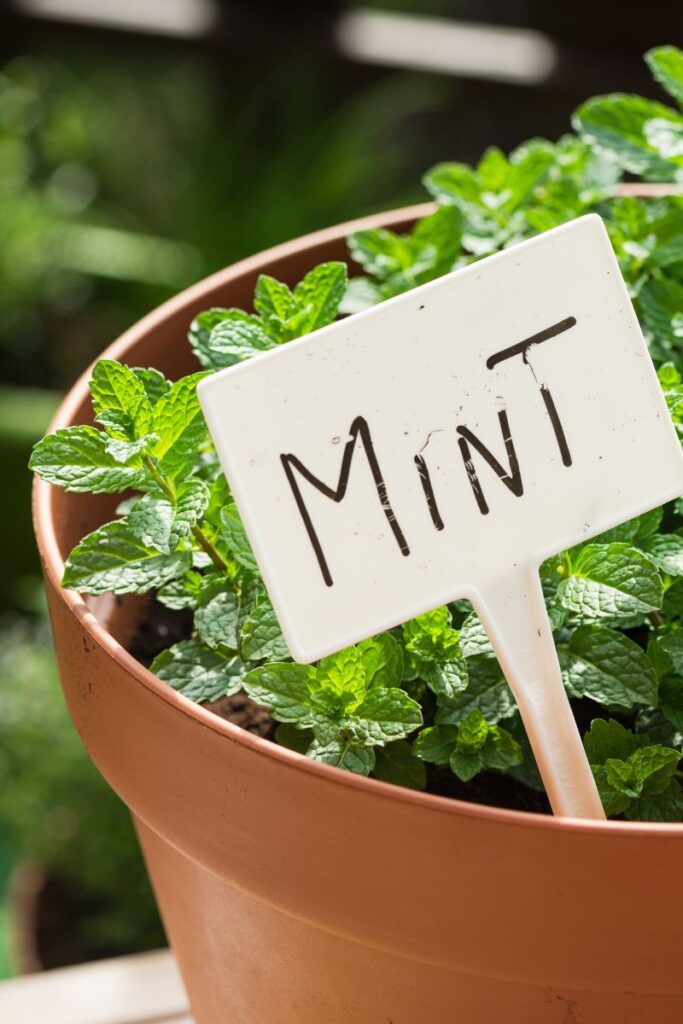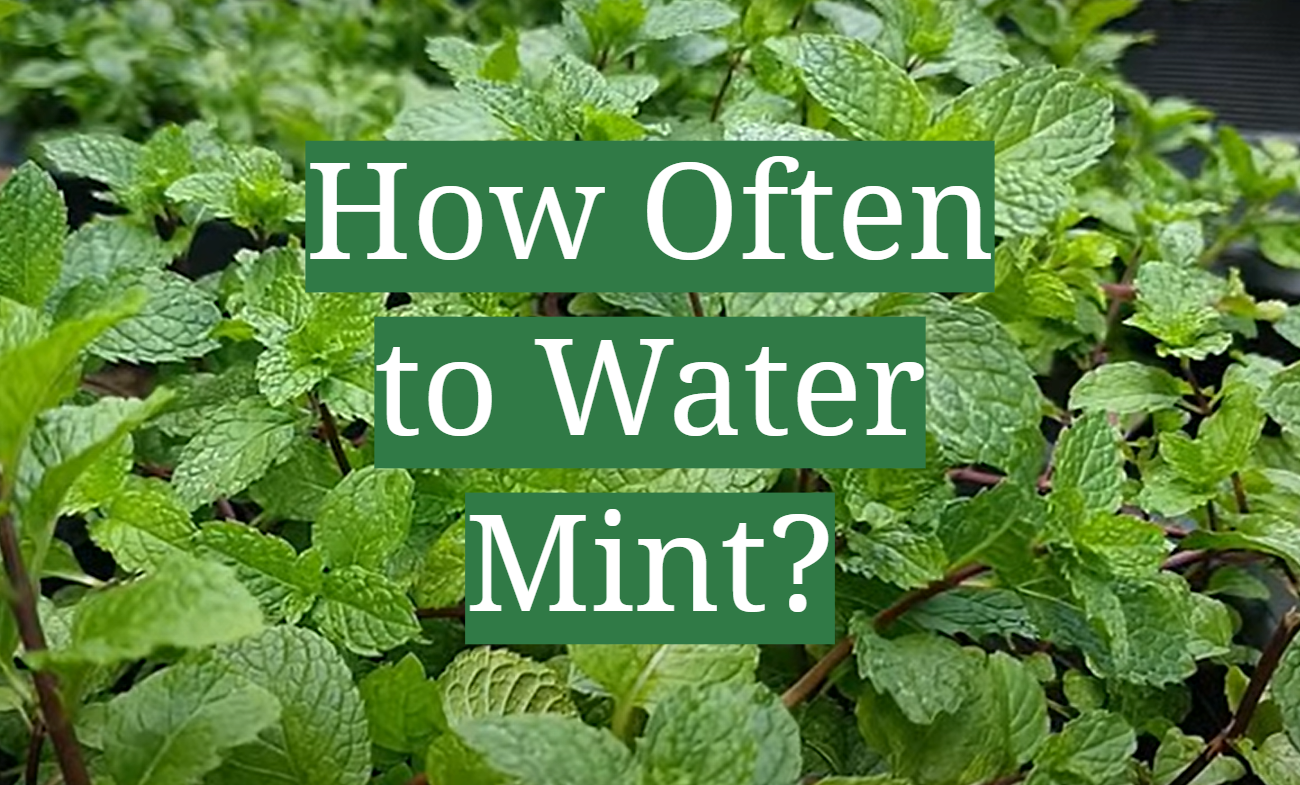Nothing quite beats the refreshing flavor and aroma of fresh mint whether it’s used in teas, juleps, desserts or savory dishes. Luckily, mint is an easy-to-grow herb that thrives with proper care. But how often should you water this versatile plant? While mint loves moisture, overwatering can cause issues. Follow this complete guide to optimize your watering schedule and keep your mint flourishing.
Mint’s Water Preferences
Before determining watering frequency it’s helpful to understand mint’s preferences
-
Mint grows best in consistently moist soil. The roots dislike extended dry periods.
-
Excess moisture can lead to root rot fungus and pests. Mint does not want soggy soil.
-
Outdoor mint needs about 1-2 inches of water per week, adjusted for climate. More when hot and dry.
-
Indoor mint should be watered when the top 1-2 inches of soil dries out.
-
Container mint needs more frequent watering as pots dry out faster.
-
Newly planted mint seedlings need light daily watering to establish.
-
Established mint can go longer between deep waterings.
So mint loves water but disdains wet feet. The sweet spot is moist but well-drained soil. Gauge your watering to hit this balance.
Watering Outdoor Mint in the Garden
When growing mint in garden beds, aim to provide around 1-2 inches of water per week through rainfall or irrigation. Here are some tips:
-
Water deeply at soil level rather than overhead to keep foliage dry and prevent disease.
-
Check soil moisture before watering. Use a finger test or moisture meter to avoid overwatering.
-
Increase frequency during hot, dry stretches. Decrease when rainy and cool.
-
Add mulch around mint to help retain moisture and reduce water needs.
-
Ensure soil has adequate drainage to prevent waterlogging.
-
Water in morning so leaves dry out during the day, discouraging mildew.
Adjust your watering schedule based on weather, soil type, and mint’s needs in your specific environment.
Watering Indoor Mint Plants
For mint grown in containers indoors, here are some best practices:
-
Choose pots with drainage holes and well-draining potting mix. This prevents wet roots.
-
Check soil with finger. Water when top 1-2 inches become dry.
-
Water until it drains from the bottom. Empty saucers so mint isn’t sitting in water.
-
Increase frequency if in a sunny spot or when growing conditions are hot and dry.
-
Decrease watering in winter when plant is less active.
-
Mist leaves occasionally to boost humidity around the plant.
-
Add pebbles in saucer under pot to prevent direct contact with water.
Tune into your individual indoor conditions to determine optimal watering frequency. Mimic mint’s native moist habitat.
Watering Mint in Outdoor Pots
Container gardening comes with increased watering needs. Here are tips for outdoor mint pots:
-
Smaller pots will need more frequent watering than larger ones.
-
In warm weather, check soil daily and water when top inch is dry.
-
If very hot, you may need to water twice a day to keep mint happy.
-
Always pour water until it drains from the bottom of the pot.
-
Cut back on watering if weather is cool and damp.
-
Bring pots into a sheltered area on exceptionally hot days.
-
Grouping pots together helps create a beneficial microclimate.
Monitor soil moisture diligently as environmental factors can cause rapid drying.
Watering Mint Seedlings
Mint seedlings need more careful moisture management than mature plants:
-
Water trays daily to keep seeds and seedling soil consistently moist.
-
Avoid overhead watering that can dislodge seeds – use a spray bottle.
-
Once seedlings are 1-2 inches tall, shift to watering every other day.
-
Check soil between waterings. Don’t let it dry out completely.
-
After true leaves develop, begin tapering off to normal watering.
-
If hot, seedlings may need daily watering.Judge based on soil.
Giving mint seedlings adequate water ensures they get a healthy start. Adjust your approach as they establish roots and mature.
Signs Your Mint Needs More Water
Underwatering is just as detrimental as overwatering for mint. Watch for these clues that your mint is thirsty:
-
Wilting, drooping leaves
-
Leaves appear dull green rather than vibrant
-
Stunted growth
-
Soil is dry 1-2 inches down
-
Pot feels significantly lighter when lifted
-
New leaves turn yellow
Don’t let mint leaves start curling before you water. Catch under-watering early by regularly checking soil moisture.
Signs Your Mint is Overwatered
Too much moisture can be just as damaging to mint. Here are red flags:
-
Yellowing leaves
-
Mint rust spots on leaves
-
White fungal coating on soil
-
Soft, brittle stems
-
Rotting roots
-
Unpleasant, mildew-like smell
-
Excess moisture in saucer after watering
Properly correcting underwatering requires more attentive soil checks and occasional moisture meter use.
Best Practices for Watering Mint
Follow these tips for success in irrigating your mint:
-
Check soil frequently, using your finger or moisture meter to determine water needs.
-
Water thoroughly until it drains from the pot bottom or moistens surrounding soil.
-
Avoid small, frequent sprinkles of water which encourages shallow roots.
-
Water in the morning to allow leaves time to dry out.
-
Add mulch in beds and pots to retain moisture longer.
-
Ensure good drainage by amending dense soils and using pots with holes.
-
Adjust schedule based on weather, plant size, and indoor vs outdoor growing.
Stay vigilant, stick to a consistent watering routine, and know both the signs of under and overwatering. With proper hydration, your mint will flourish!
Common Questions About Watering Mint
How much water does mint need?
- Outdoor mint needs about 1-2 inches of water per week. Indoor mint should be watered when the top 1-2 inches of soil dries out. Adjust for climate and pot size.
Should mint be watered daily?
- Only mint seedlings need daily watering. Mature mint prefers a thorough watering every 2-4 days unless heat or container growing causes quicker drying.
Can you overwater mint?
- Yes, mint can suffer from overwatering. Too much moisture causes root rot, fungus, and other problems. Allow the soil to partially dry out between waterings.
Does mint like to be dry or moist?
- Mint prefers consistently moist soil. But it should never sit in soggy soil or standing water. Find the right balance through attentive soil checks.
When is the best time to water mint?
- Early morning is ideal so moisture sits in the root zone but leaves have time to dry out during the day, preventing mildew. Avoid evening watering.
The Takeaway
Caring for your mint is easy when you understand its watering needs. Mint thrives with consistent moisture but intolerant of wet feet. Adjust your watering schedule based on climate, soil, and growing factors. And monitor soil frequently to maintain ideal hydration. With proper care, your mint will reward you with vigorous growth and abundant flavor.
Tips for Preventing Watering Issues
The right way to water your mint is important for its health and to avoid common problems that can happen to these colorful herbs. Here are some strategies to help you maintain a thriving mint garden while avoiding potential problems:
Mulching is a fantastic method to maintain soil moisture and prevent issues related to erratic watering. If you put a layer of organic mulch, like straw or compost, around your outdoor mint plants, it helps keep the soil moist by reducing evaporation and temperature changes. This protective layer also suppresses weeds that can compete for moisture with your mint.
When you mulch, make sure to leave a little space around the stems of the mint so that water doesn’t build up against them and cause them to rot. Using the right mulch makes the soil more stable and water-retentive, which lowers the risk of drought stress and other soil-related issues.
Group Pots Together to Retain Moisture:
If you have multiple mint pots, clustering them together can be a clever strategy to retain moisture. Grouping pots creates a microenvironment with higher humidity levels, which mint appreciates. The proximity of pots helps reduce moisture loss through evaporation, especially in dry and arid climates.

Additionally, grouping pots allows for efficient watering practices. When you water one pot, the humidity rises and helps the pots next to it, so they don’t need to be watered separately.
Caring for mint in pots involves thoughtful consideration of pot size, potting mix selection, and placement. With bigger pots and potting mix that keeps water in, you can help your mint plants stay in the right level of soil moisture. Grouping pots together not only conserves moisture but also simplifies the watering process. If you follow these tips, your potted mint will grow well and give you fresh leaves for cooking right outside your door.

Gardening 101: How Often to Water Mint for Lush Growth
- A Complete Guide to Caring for Yuki Cherry Blossom Shrub - January 23, 2025
- Identifying Red Hot Poker Seeds: What to Look For When Harvesting Torch Lily Pods - January 23, 2025
- A Complete Guide to Harvesting Evening Primrose Seeds - January 23, 2025

